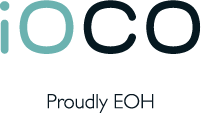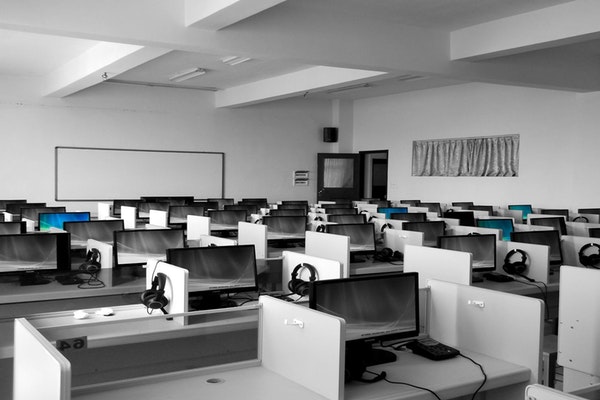The world around us is changing, devices are getting smarter, jobs are being replaced by machines and technology is growing exponentially and becoming ever more present in our daily lives. One of the technologies shaping the future is the Internet of things (IoT).
In simple terms, IoT connects dumb devices to the internet. What this means is that you can take a device that typically never spoke to the internet such as a microwave, TV or a washing machine and connect that device to the internet.
What is the purpose of IoT?
The main purpose of IoT is to connect the world around us by connecting the objects around us.
Take this scenario: You have just left work, your car pings your home to determine your travel time home (35 minutes), a message is prompted on a screen in your car to “start the coffee machine” at home. You tap a button to start the coffee making process. You drive through traffic and you enter your street. A prompt from your car informs your gate that you are 12 seconds from home and you have the option of opening the gate ahead of time via a prompt on a screen in your car. As you pass through your gate, your gate prompts a message to your car to open your garage, you confirm and the garage door opens. You drive into your garage and step out of your car and press a button on your phone to lock your car and unlock your front door. You walk through the door and enjoy a fresh cup of coffee which you started making from your car, when you left work 35 minutes ago. You then remember that you did not close the garage door, so you whip out your phone while sitting on your comfy couch and click ‘Close garage door’.
This is one of many examples of how IoT could be shaping the future. And it’s closer than you think.
How does IoT work?
- Sensors/Devices – A sensor or device collects data from an environment. This could be something as simple as a temperature gauge detecting the temperature in a room and adjusting the temperature based on a predetermined preference and prompting a user to adjust. It could be a greenhouse detecting the humidity in the air or the water in the soil to determine when to prompt a farmer to water his plants.
- Connectivity – The data collected is sent to the cloud through cellular, satellite, Wifi, Bluetooth, LPWAN or connecting directly via Ethernet. Basically this is how the data collected from the device gets transferred to the cloud.
- Data processing – Once the data gets to the cloud, the software must process this information.
- User interface – This information is made available to a user. This could be via an email notification, sms or an application. The user interface is any face that is used to interpret the situation by the user so that the user can decide on the next action.
Uses for IoT
- Smart home – Forgot to turn your lights or air conditioning off when you left for work? You can do this all from a device or an application. Perhaps you have a friend coming over ahead of your arrival from work. You can unlock your house for them from your work so that they can enter your house without you being present and allow guests to relax while they wait for your arrival.
- Connected cars – You can start your car, lock the doors or check the pressure of your tyres all from your smart device.
- Smart cities – IoT will shape the way a city works, some of which include finding parking, motion lighting, or monitoring air and noise pollution for example.
- Retail – IoT will enhance the customer shopping experience by tracking the customers path through a store, checking frequently purchased items, guiding consumers to certain products through the consumers shopping list, and showing the consumers last bought items to name a few.
- Healthcare – Wearable devices can monitor specific areas of your body such as your heart rate as well as daily vital signs. If the user’s vitals drop, an ambulance and/or loved ones can be notified. The ambulance can take the information from the device with their physical assessment and directly provide it to the correct medical professionals.
The future of IoT is a symbiotic relationship
Users can make decisions with the touch of a button as IoT connects dumb devices to the internet. But what if we wanted to take away the human element and give this task to a robot that will essentially make a calculated decision on the users’ behalf. A robotic decision that removes most elements of human interaction which will aid better decisions through mass amounts of data processing. This is where Artificial Intelligence comes in.
Artificial intelligence
AI is the ability of a computer program or a machine to think and learn – and thus be able to make decisions similar to that of a human.
So let’s explore coupling AI and IoT by using the example of a farmer managing a greenhouse.
When coupling AI and IoT we could use a device to monitor the moisture in the soil and humidity in the air. Through gathering mass amounts of data on the plants in the greenhouse and running millions of different scenarios that could determine when to automatically water and fertilise specific crops in order to achieve quality growth. This means that AI and IoT will have to consume mass amounts of data in order to make the best decision for each and every crop to efficiently grow. This is where big data could step in.
Big data
Big Data means a massive volume of both structured and unstructured data that is so large, that it becomes difficult to process using traditional database and software techniques. In most enterprise scenarios, the volume of data is too big, moves too fast or exceeds current processing capacity. In terms of a farmer, big data would consist of mass amounts of information based on moisture in the soil, humidity in the air, pests, stages of growth and much, much more. This data coupled with IoT and AI will give the farmer a fantastic management ecosystem for his greenhouse for a successful plantation.
But what else can be done? We have three key pieces of technology in IoT, AI and Big data for our friendly farmer. This is where the final piece of the puzzle is inserted – Blockchain technology.
Blockchain
Blockchain is a technology that allows individuals and companies to make instantaneous transactions on a network without any middlemen. Transactions made on Blockchain are completely secure, and, by function of Blockchain technology, are kept as a record of what happened.
So to continue on the path of helping our friendly farmer – Blockchain technology can assist in securing the information transferred between devices and ensure that information is not intercepted, so that the secrets of the plantation are known only to the farmer and not his competitor – the unfriendly farmer.
This would in the instance of our friendly farmer, allow a comprehensive monitoring system that essentially takes care of itself by utilising Big data, AI, IoT and Blockchain technology.
Where to from here?
8 billion devices will be connected to the internet by 2020. 47% of jobs will disappear in the next 25 years as robots will replace 5 million workers by 2020. Over 4.2 billion data records were stolen in 2016. 90% of the world’s data has only been created in the last couple of years.
The amount of technical information is doubling every 2 years. For students starting a 4-year technical or college degree, this means ½ of what they learn in their first year of study will be outdated by their 3rd year of study. We are currently preparing students for jobs that don’t exist using technologies that haven’t been invented; in order to solve problems that we don’t even know are problems yet.
The world is moving faster than we can blink, but this is a good thing. The use of technologies like AI to make better decisions with Big data collected from IoT devices which can securely transfer information between systems using Blockchain technology which will aid humans in growing sustainable businesses that will build a strong economy.
The key note on any system that we build going forward should consider that not all technologies will fit perfectly into every environment. But, the user experience on any system should always be a pleasant experience with the least amount of user effort which protects the users data and enables them to achieve their desired goal. In the case of our friendly farmer, we should consider the end goal, which for him, is to grow the perfect crop. The “how” is where technology places itself and enables him to better achieve his goal with the least amount of effort on a day to day basis.
Technology is here to assist in making life better and easier and utilising this technology will be the “what” that separates competitors in the market. The future is bright, so grab your sunglasses and breathe in the impending Fourth Industrial Revolution.

